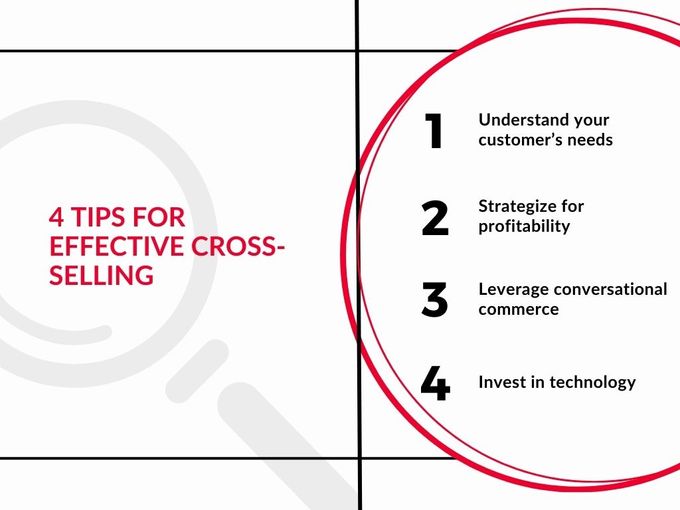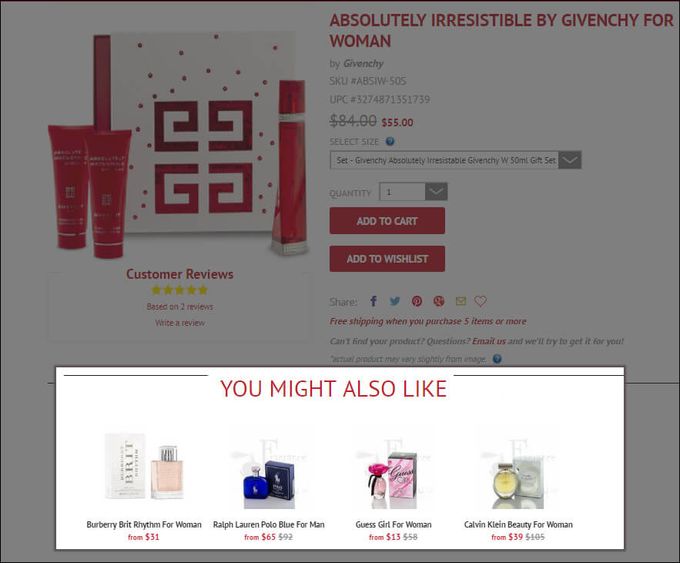Top Cross-Selling Tips for Maximizing Revenue
Cross-selling allows businesses to expose customers to their full product range, enhancing awareness and opening new sales opportunities.
Updated November 19, 2024.

Cross-selling is a great strategy for e-commerce brands looking to elevate their game—strategically offering complementary items that enhance customer experience.
But how do you cross-sell effectively without turning customers off? This guide delves into cross-selling nuances, exploring customer-centric approaches that boost revenue while cultivating loyalty.
Meet the Expert
Jameela Ghann is a seasoned online store owner with over a decade of eCommerce experience. Apart from running Alora Boutique, she's also the marketing manager for Fera Product Reviews.
Why Does Cross-Selling Matter?
The strategy entails offering complementary or related products to customers during their purchase journey to encourage them to add more items to their cart, resulting in a higher average order value. Stats show that cross-selling can increase sales by 10-30%, and 60% of customers prefer being offered additional products.
Amazon generates 35% of its revenue from cross-selling alone. The numbers speak for themselves—mastering cross-selling is a surefire way to supercharge your bottom line.
Additionally, Tushy strategically promotes complementary items on the order confirmation page. These case studies show how these brands have generated huge revenue through cross-selling.
» Explore the benefits of upselling and cross-selling
4 Tips for Effective Cross-Selling
1. Understand Your Customers' Needs
Cross-selling begins with intimately understanding your customers' needs and shopping behaviors. After all, how can you offer complementary products if you don't understand your shopper's intent?
Let's consider the example of a bidet company. It makes perfect sense for them to offer toilet paper as a cross-sell because these two products are typically used together. Understanding the customer's needs and use cases is essential in identifying such product synergies.
To gain these insights, it's helpful to analyze your shopping cart data and look for common product pairings to market at the right stage of the conversion funnel. Which items are frequently purchased together? This can reveal powerful cross-selling opportunities you can capitalize on in your merchandising strategy.
eCommerce platforms will use big data and AI to analyze customer preferences and browsing behavior, leveraging effective personalization for advanced cross-sell suggestions with a higher chance of landing.
This simple cross-selling tactic can:
- Boost sales
- Enhance customer satisfaction
- Encourage repeat purchases
It's important to remember that the objective is to sell more products and offer solutions that personalize your customers' shopping experiences and make their lives easier.
» Learn how to improve the customer experience with AI
2. Strategize for Profitability
While increasing sales is the primary objective, it's crucial to approach cross-selling through the lens of profitability. After all, what good are extra transactions if they don't contribute to your bottom line?
A smart tactic for businesses dealing primarily with big-ticket items is to cross-sell lower-cost complementary products alongside the main purchase.
Customers already investing in a high-value item are often more receptive to adding smaller supplementary products, viewing them as convenient add-ons. Conversely, if your store specializes in lower-priced goods, prioritize cross-selling products with the highest profit margins.
While popularity is a consideration, profitability should take precedence to ensure your efforts directly impact revenue goals.
3. Leverage Conversational Commerce
Chatbots and virtual assistants in the checkout flow will provide real-time, personalized cross-selling and customer support, simplifying your cross-selling endeavors while enhancing the overall experience.
4. Invest in Technology
In today's digital age, various cross-selling tools and apps can help streamline and automate the process, from effective site search to streamlined checkout. However, it's important not to rely blindly on these assets. The key to success lies in combining technology with human expertise in a balanced approach.
One such tool is Fast Simon's cross-sell technology, which can accelerate your efforts by analyzing customer behavior and suggesting complementary products. However, it's important to remember that these recommendations should be considered a starting point, not the final word.
As a business owner, you have access to crucial insights about your products, customers, and operations. You should utilize this knowledge to refine and adapt the suggestions provided by your tools. Prioritizing higher-margin products or combinations that align with your brand values is essential.
Overcoming Cross-Selling Common Challenges
Lack of Customer Data Insights
Overcoming insufficient customer data requires diving deep into analytics to identify customer preferences and behaviors, examining browsing patterns, purchase journeys, and click-through data. Additionally, monitoring competitors' strategies can provide insights into effective cross-selling tactics.
Overwhelming the Customer Experience
To avoid overwhelming customers, use a subtle cross-selling approach. Suggest complementary products strategically, such as in the cart or via the "Customers also viewed" sections. This encourages exploration without disruption.
Unsuitable Cross-Selling Tools
Look for tailored solutions on e-commerce app stores like Shopify or Wix. Analyze competitors to see which cross-selling apps they use.
» Want to boost sales further? Learn where to personalize your store.
The Cross-Selling Mindset to Adopt
Successful cross-selling boils down to a customer-centric mindset. By deeply understanding needs, curating thoughtful recommendations, and integrating cross-selling seamlessly into the journey, you cultivate loyalty while boosting conversions. Leverage technology intelligently, but never lose sight of the human insights that set you apart.
Cross-selling presents an opportunity to drive profitability and delight customers simultaneously. Approach it strategically - stay attuned to innovations, continually refine your tactics, and always prioritize delivering genuine value.








